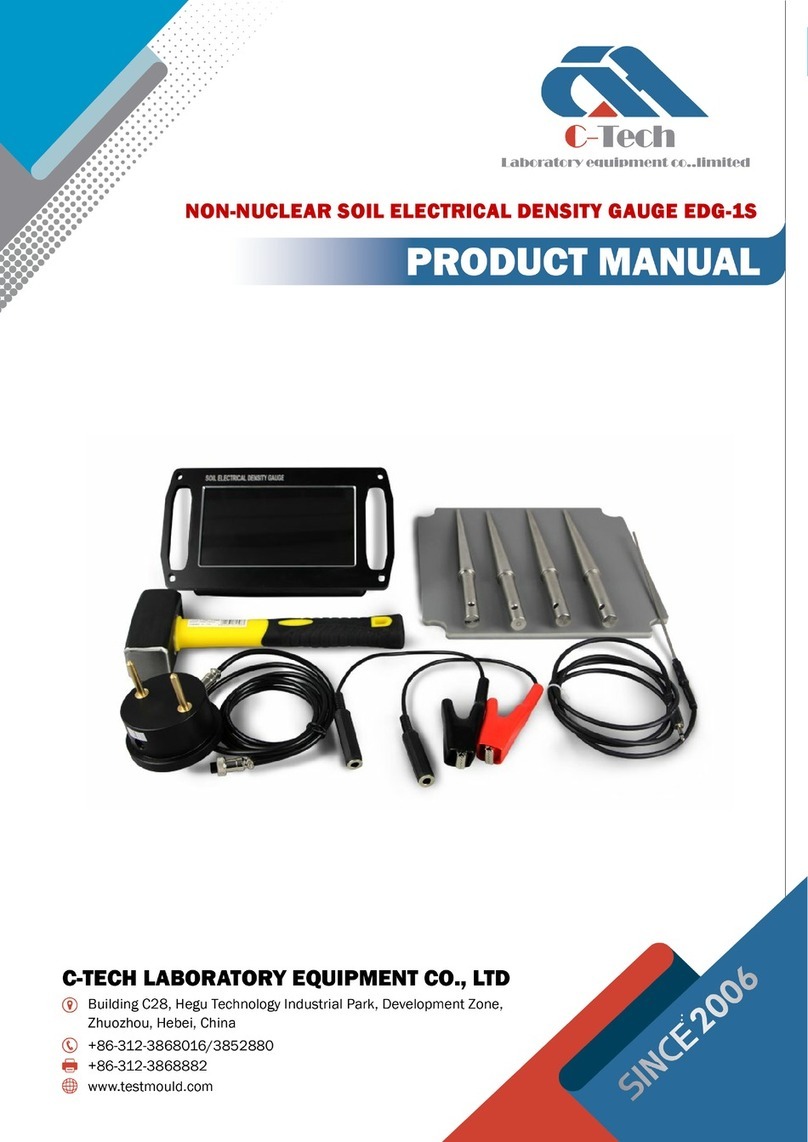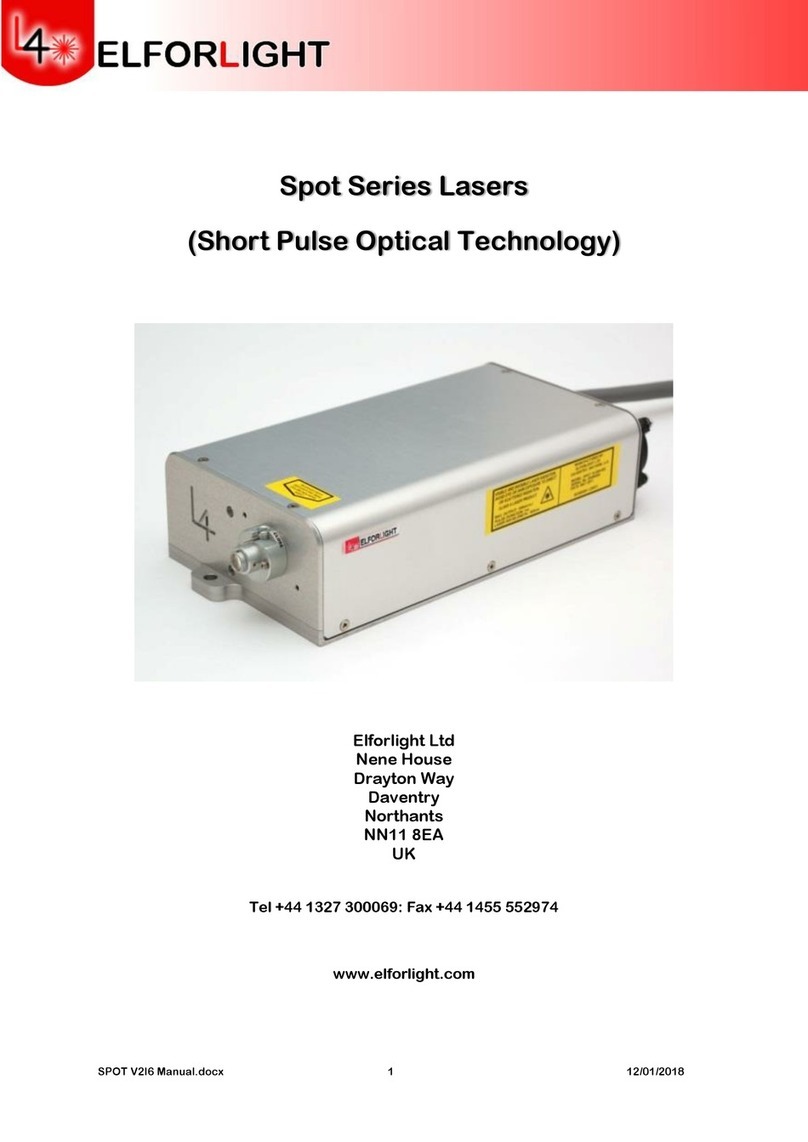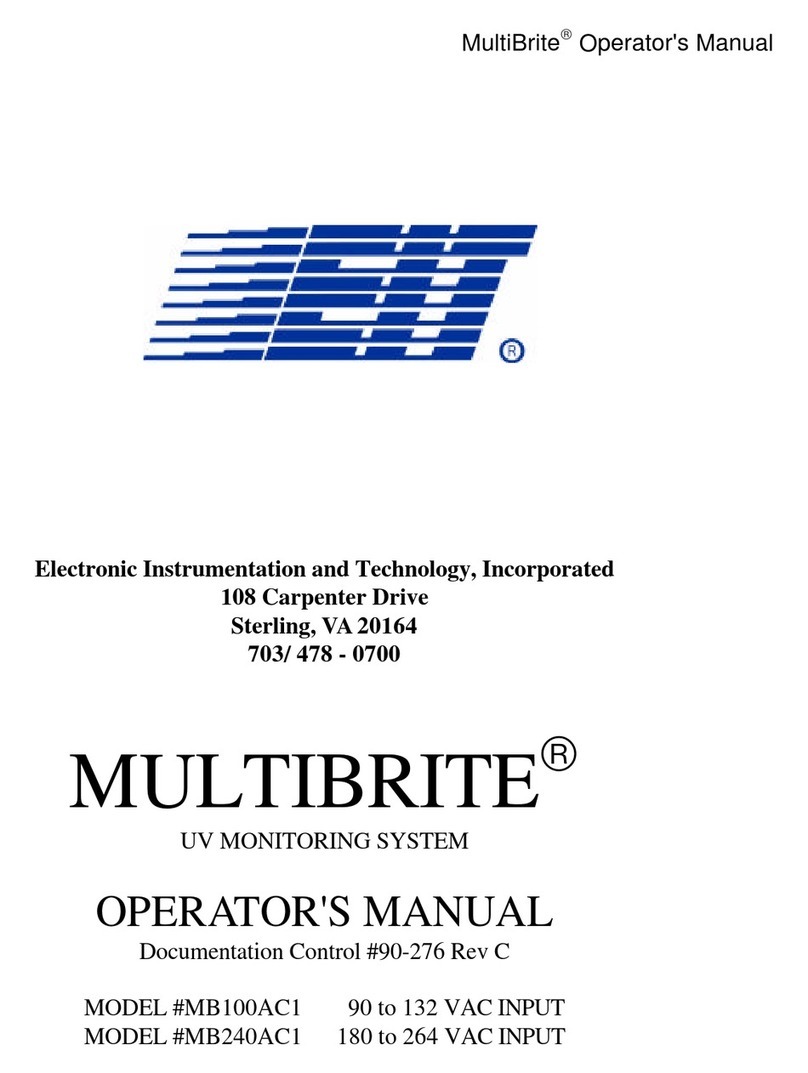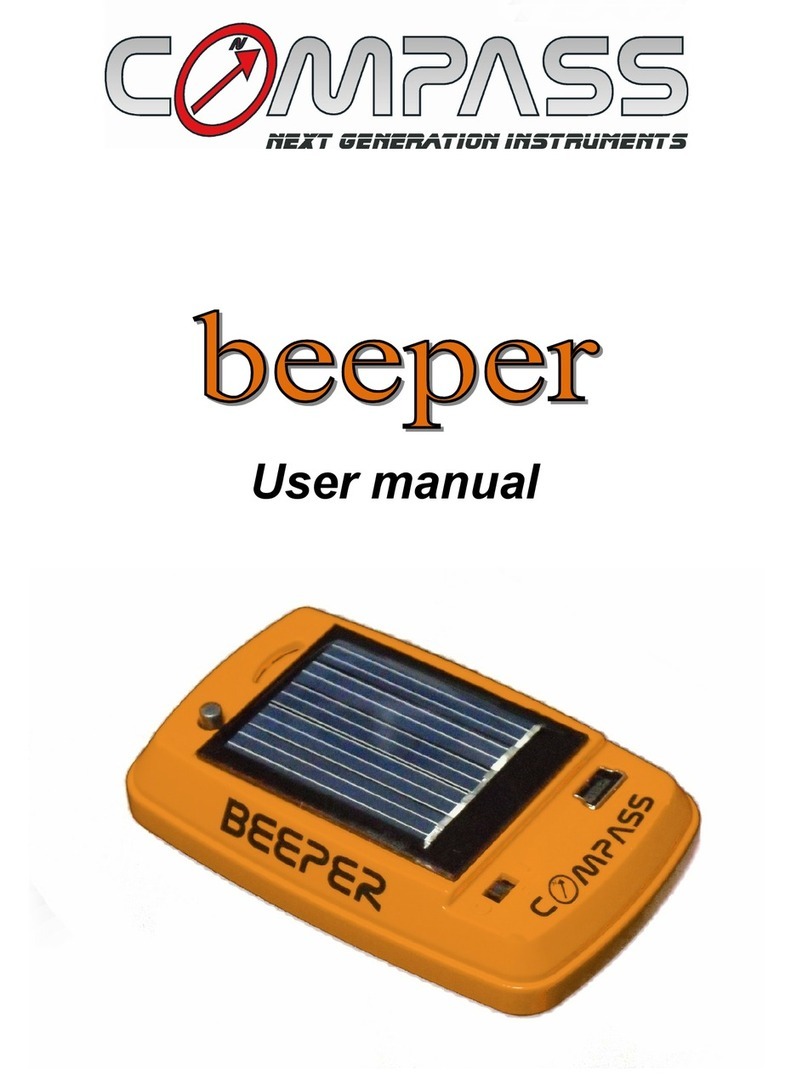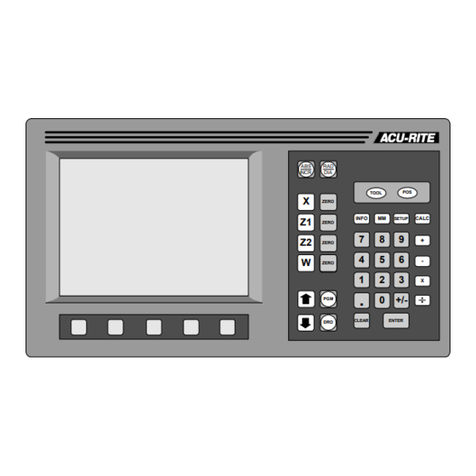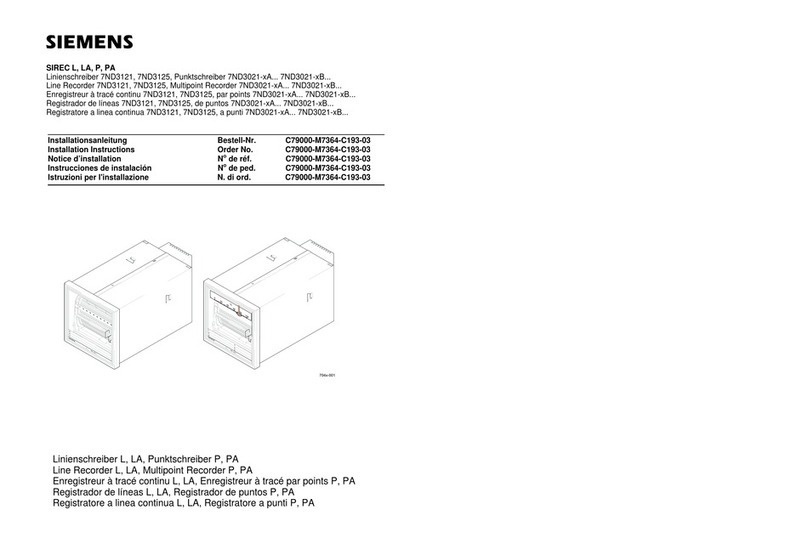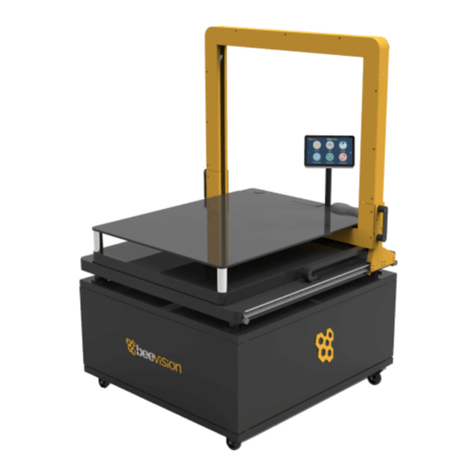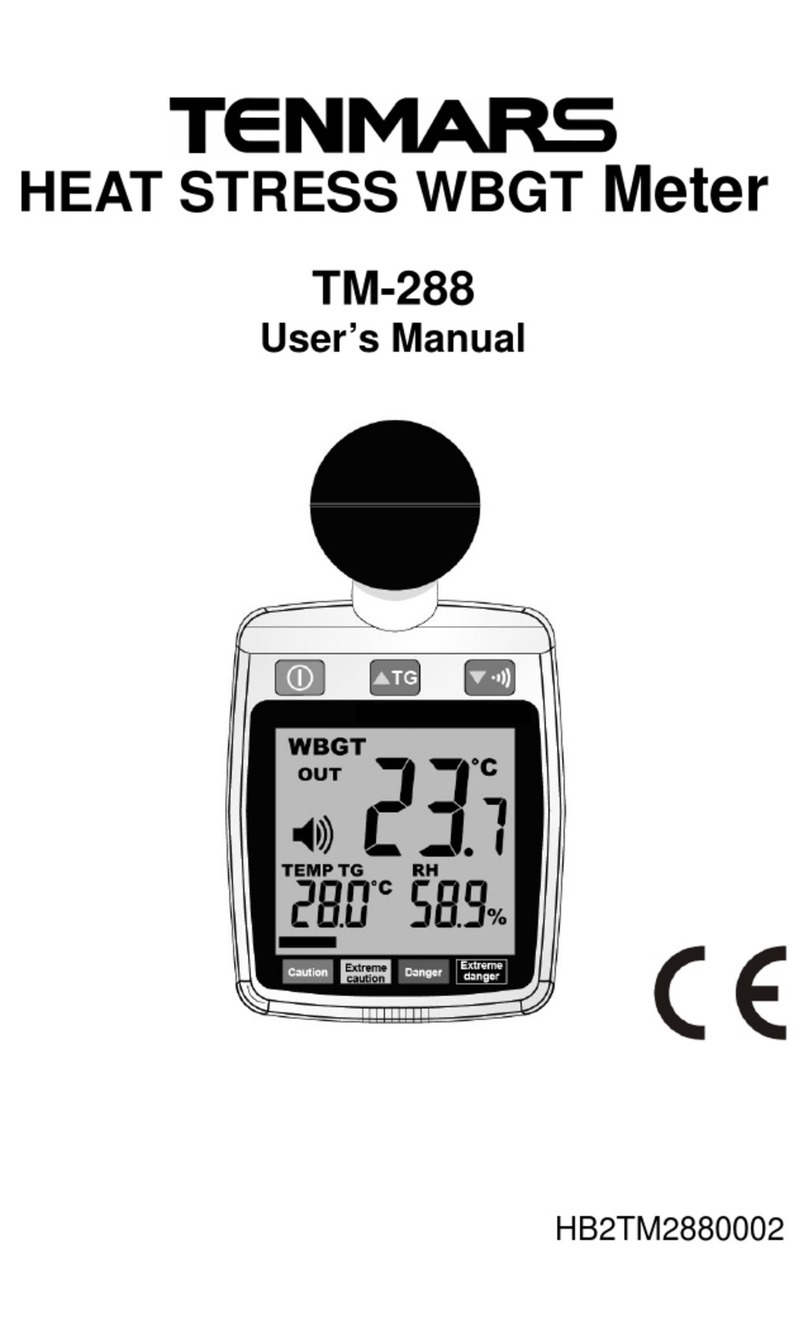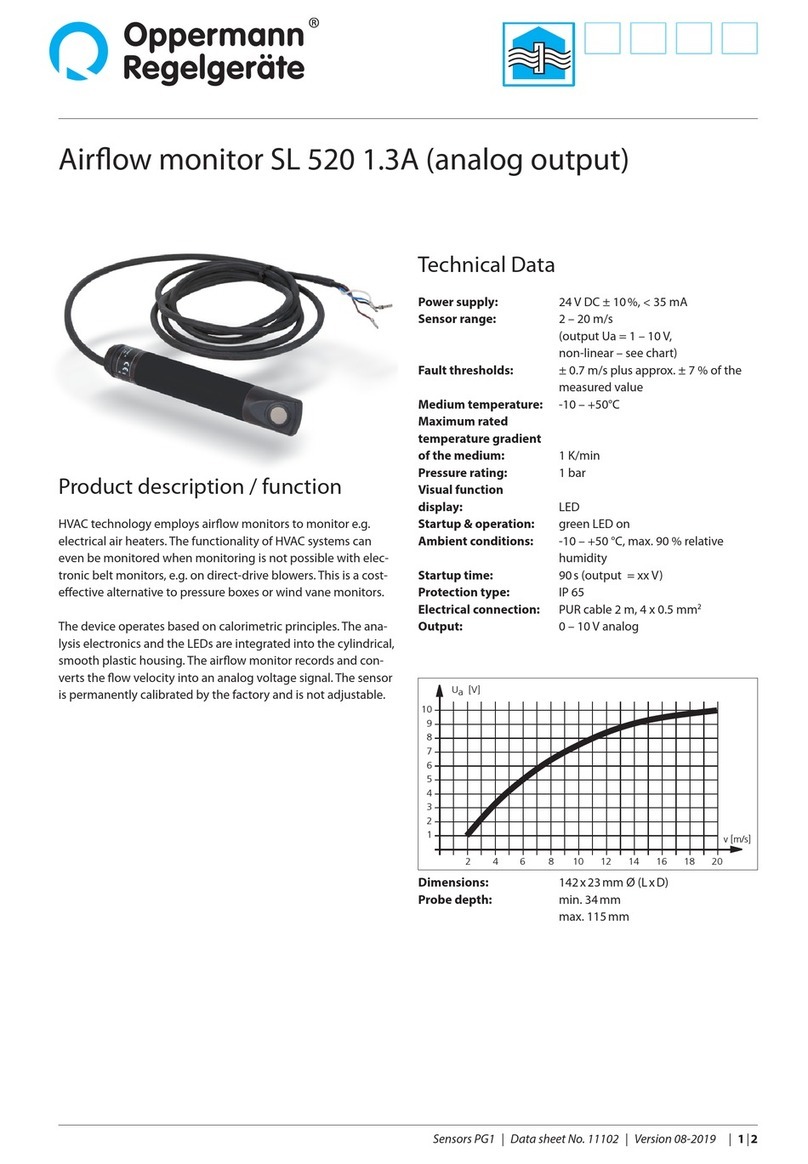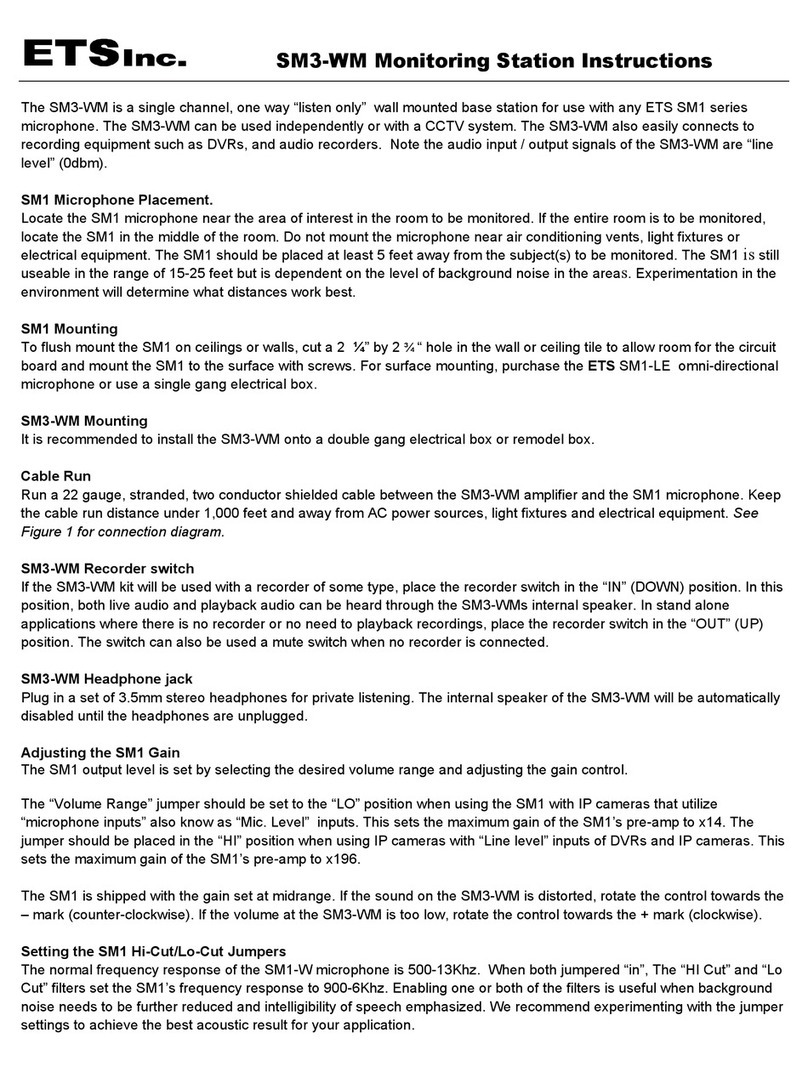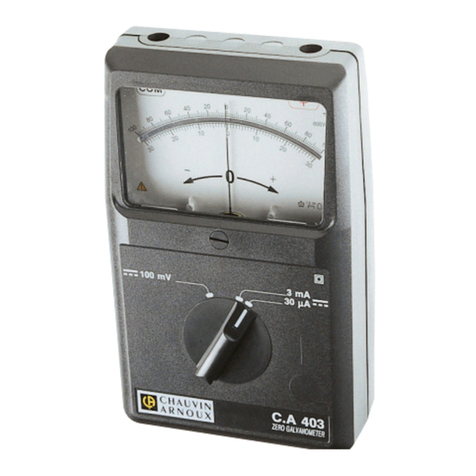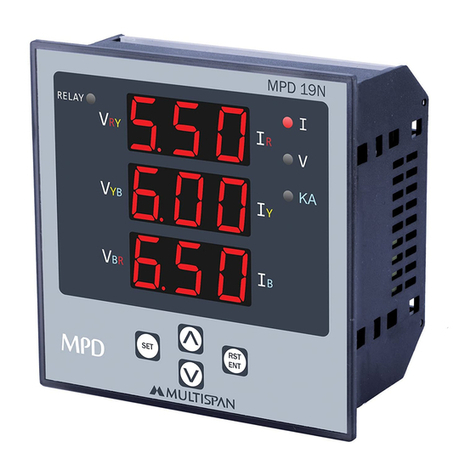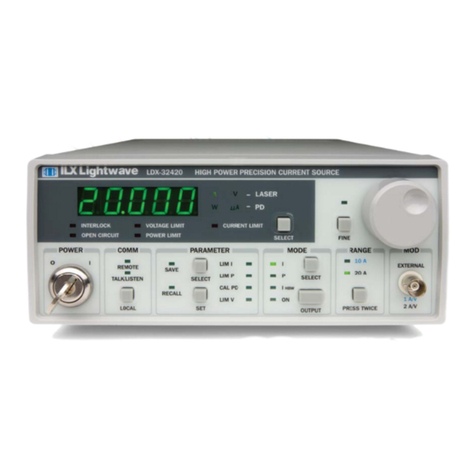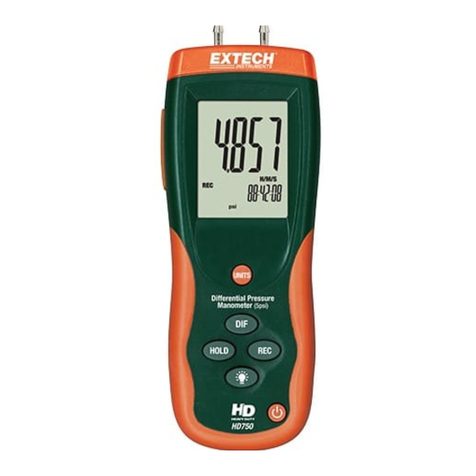C-Tech HTHY-8159 User manual

I
ASPHALT MIX ANALYZER HTHY-8159/8159A

I
CONTENTS
I. Preface ............................................................................................................................................................1
II. Technical specifications and installation ......................................................................................................4
III. Equipment introduction ..................................................................................................................................6
IV. Operation ...................................................................................................................................................... 12
V. Operation interface instructions ................................................................................................................. 21
VI. Maintenance ................................................................................................................................................ 26
VII. Balance calibration method ........................................................................................................................ 26
Recirculating chiller DL-400 instruction manual ........................................................................................... 29
Circulating water vacuum pump SHB-III series instruction manual .............................................................. 43
Rotary evaporator R-3001 instruction manual ............................................................................................. 48

-1 -
I. Preface
Safety tips
Notice for use
When using the equipment under different circumstances, the manufacturer does not assume any
responsibility for any foreseeable harm caused directly or indirectly to people, things or animals.
Without prior notice, the manufacturer has the right to make changes to the file information or
equipment.
The operator is responsible for all effective operations of the equipment before or during use.
Read the entire manual carefully before operating the equipment.
In order to use the equipment correctly, the operator needs to clearly understand the information
and restrictions in this manual.
Only trained operators are allowed to operate the equipment.
The operator must be familiar with the operation method and structure of the equipment.
The purchaser must ensure that the operator has passed the training and is familiar with all the
information and instructions in the provided documents. Even if the above preparations are made,
the operator or user must be aware of the potential risks when operating the equipment.
Use original accessories to ensure the safety, reliability and best performance of the equipment.
Any disassembly or modification of equipment (electrical, mechanical or other) without prior written
permission from the manufacturer is considered an illegal operation, and the manufacturer declares
that it will not be liable for any damage caused thereby.
Standards and requirements
Compliance with standards: ASTM 8159
This equipment is a special equipment, any other purpose is considered unsuitable, the equipment
should be used away from explosion or fire hazards.

- 2 -
During operation, check the condition of the equipment. If it is in a dangerous situation, stop working
immediately and consult the manufacturer's after-sales service department. It is the customer's
responsibility to verify whether the installation or use is carried out according to the instructions.
Please contact the manufacturer when in doubt.
Operator
WARNING!
Only qualified personnel are allowed to use, transport, install, maintain, dismantle
and dispose of the equipment. This manual is specially written for qualified
operators and contains the necessary information for using the equipment.
"Qualified Operator" means a person who has been trained, has done relevant tests, is familiar with
relevant standards, restrictions and measures, is authorized by the factory safety manager, can
perform any necessary activities, and can identify and avoid any possible hazards.
The manufacturer recommends strictly abide by the instructions, procedures, recommendations and
effective work safety regulations in this manual, and even use appropriate protective equipment
(whether it is a person or a part of a machine).
Be familiar with and follow the instructions, safety warnings and dangers in this manual in order to
minimize the risks of installation, operation, management and maintenance.
Responsibilities and obligations of factory safety managers
Know the functions of this equipment, its instructions, safety protection devices, possible hazards during use,
and all the detailed information in this manual, you can obtain knowledge of these aspects by carefully reading
this manual.
Before using this equipment, properly train and educate "qualified operators", and carefully train these
personnel with regard to the protective device of the machine.
In order to operate the equipment, it is necessary to understand the current safety regulations in detail, and
arrange qualified operators for transportation, handling, installation, use, maintenance and disposal, etc.
Ensure that the safety device of the equipment is not damaged or disassembled, and check it every day.
Provide operators with appropriate personal protective equipment.
The manufacturer can explain, provide assistance and training for untrained personnel who cause damage to

- 3 -
things or people due to improper use, error and negligence, but does not assume all responsibilities.
Warning and danger signs
This equipment is designed and manufactured in accordance with the current standards, so it is
equipped with well-designed mechanical and electrical safety devices to protect the operator or user
from possible injury. However, during use or in certain operating procedures, the equipment still has
potential risks. Carefully read and follow the operating procedures in the manual. At the same time,
it is recommended to use personal protective equipment and comply with the implementation of
safety regulations, which will reduce risks.
The relevant chapters of this manual contain "WARNING" signs. These signs are displayed in bold
type "WARNING".
WARNING!
This symbol is used to indicate a situation where non-compliance will damage the equipment or injure
people.
DESCRIPTION
Before proceeding, please refer to the relevant part of the manual.
Dangerous area refers to the area in or near the equipment that may cause injury to people or affect
health.
Purpose of writing the operation manual
The purpose of editing this manual is to provide all operators of the equipment with all necessary
installation, use and maintenance information from production to scrapping in a comprehensive and
clear manner, which is useful for all foreseeable emergencies listed by the manufacturer.
The operator must operate the equipment by himself according to the instructions. Laboratory or site
safety managers, equipment operators and any internal and external maintenance workers must
read this manual carefully.
The manual is an integral part of the product and is related to the equipment.
This manual must be protected and placed close to the equipment for easy reference at any time.

- 4 -
IMPORTANT NOTE: This manual does not replace testing and technical training of workers, but it must
be seen as a guide to perform its functions. In addition, the operator should be aware of all standards
and rules in the manual regarding the correct use of the equipment and related test performance. It
is the responsibility of the installer, laboratory or site manager to understand this manual. The
manufacturer can provide further information.
II. Technical specifications and installation
Technical specifications
Model
HTHY-8159A
HTHY-8159
Maximum sample weight
Conventional Asphalt Mixture 3.5Kg Conventional Asphalt Mixture 3.5Kg
Rubber Asphalt Mixture 1.5Kg /
Centrifuge speed
Not less than 8000r/min Not less than 8000r/min
Centrifuge cup capacity
Less than 300g Less than 300g
Distillation capacity
Main heater 10L/h Main heater 10L/h
Main heater + auxiliary heater: 35L/h Main heater + auxiliary heater: 35L/h
Power supply
AC220V 50Hz AC220V 50Hz
Dimensions
1300 x 800 x 1700 mm 1300 x 800 x 1700 mm
Weight
200kg 200kg
Installation
Unpacking
After unpacking, check the integrity of the equipment for any visible damaged parts. When in doubt,
do not use the device and contact the manufacturer.
WARNING!
The parts used for packaging (plastic bags, polystyrene, nails, screws, boards, etc.)
must be kept out of the reach of children because they are dangerous. These parts
should be placed in suitable containers.
This equipment must be installed horizontally on a stable floor. It is recommended to install the
equipment in a standard fume hood, and operate as required, connect the overpressure protection

- 5 -
pipe on the back of the equipment upwards and outwards to the ventilation duct opening.
Power connection
Power requirements: 380V three-phase four-wire system with working zero line.
Connection of cooling water pipes
Figure 1
As shown in Figure 1, the chiller’s inlet is connected to the outlet of the analyzer, and the chiller’s
outlet is connected to the water inlet of the analyzer.
Solvent requirements
This equipment can only use neutral and stable trichloroethylene solvent with a boiling point of 87°C.
If the trichloroethylene is acidic, it must be replaced, otherwise the equipment will be damaged due
to corrosion!
Storage, transportation and moving
Storage
The equipment must be stored in the original packaging and in a closed environment, with a
minimum temperature of -15°C, a maximum of 60°C, and a maximum humidity of 70% from
atmospheric damage.
transportation and moving
In order to avoid irreversible damage to the equipment, move it carefully, do not turn it over, prevent
it from being rained, and do not stack it, avoid collisions and heat sources for the packaging and the
loaded goods.
Chiller water pipe interface
Analyzer water pipe interface

- 6 -
Equipment transport and movement must be entrusted to qualified personnel who can ensure
proper movement.
III. Equipment introduction
Structure
Figure 2
Conventional asphalt
mixture washing chamber
Rubber asphalt mixture
washing chamber
HMI
Power supply
Weighing device
Mixture liquid tank
Solvent tank
Centrifuge
Electric cabinet

- 7 -
Working principle
Figure 3
1- Washing chamber 2- Washing heater 3- Mixture liquid window 4- Centrifuge 5- Centrifuge motor
6-Condenser 7-Vacuum pump 8-Drain valve 9-Solvent pump 10-Cooling device 11-Solvent tank
12-Heater 13-Mixture liquid tank 14-Rubber washing chamber
The working principle of the device is shown in Figure 3. Put the dried and dispersed asphalt mixture
(conventional asphalt mixture does not exceed 3.5Kg, rubber asphalt mixture does not exceed 1.5Kg)
into the corresponding washing drum. Then put the washing drum in the washing chamber.The
system controls the automatic injection of solvent, turns on the ultrasonic wave and the washing
drum rotates at the same time. The washed mixture liquid is centrifuged to separate the mineral
powder, and then separate the solvent and asphalt by distillation. The aggregates in the washing
drum and the centrifugally separated mineral powder can be dried inside the equipment.
Component
The equipment is mainly composed of washing device (including conventional asphalt and rubber
asphalt), centrifuge device, distillation system and drying device.
Conventional asphalt mixture washing device

- 8 -
As shown in Figure 4, the washing chamber is made of stainless steel. In order to improve the
washing efficiency, the washing drum is driven by the motor to rotate in the washing chamber, and
is equipped with an ultrasonic washing device.
The washing chamber is equipped with a safety lock, and the equipment cannot be started when the
cover of the washing chamber is open.
Conventional asphalt washing drum
The conventional asphalt washing drum is composed of the drum main body and the Closing lid, as
shown in Figure 5. The washing drum is divided into three specifications, 63μm, 75μm and 90μm
respectively, and the appropriate size can be selected according to the actual use.
Safety lock
Cover
washing chamber
Washing drum
Figure 4
Figure 5
Washing drum main body
Closing lid

- 9 -
Rubber asphalt mixture washing device, as shown in Figure 6.
The rubber-asphalt mixture washing bucket, as shown in Figure 7, is made of stainless steel. There
are three specifications of 63μm, 75μm and 90μm, and the appropriate size can be selected
according to the actual use.
Figure 8 shows the agitator, which is driven by the stirring motor to rotate during washing to improve
washing efficiency.
Figure 9 shows the rubber collector. Since the density of the rubber is lower than that of the solvent,
during washing, the rubber particles are suspended above the solvent and separated by the rubber
collector.
Figure 10 shows the transfer handle, which is convenient for removing the washing drum from the
washing chamber.
Washing motor
Cover
Handle
Hasp lock
Rubber asphalt
washing chamber
Figure 6
Figure 7
Figure 8

- 10 -
Centrifuge device
The centrifuge device (shown in Figure 11) is mainly
composed of a centrifuge chamber, a centrifuge motor,
a centrifuge cup (shown in Figure 13), a movable cover
plate and a safety lock, as shown in Figure 12. It is
mainly used to separate the mineral powder from the
mixture liquid discharged from the washing drum. Due
to the high-speed rotation, the mineral powder remains
in the centrifuge cup, and the separated mixture liquid
is discharged into the mixture liquid tank.
The mixture liquid window can observe the color of the
liquid flowing out of the washing chamber, and the
washing time can be adjusted according to the color of the liquid.
Before the test, close the movable cover and compress
it with the hasp lock.
The device cannot be started with the safety lock open.
Figure 9
Figure 10
Figure 11
Mixture
liquid
window
Hasp
lock
Figure 13
Cover
Safety lock
Centrifuge
chamber
Centrifuge
cup
Figure 12

- 11 -
Distillation system
The distillation system (shown in Figure 14) mainly includes a solvent tank (left side), a mixture liquid
tank (right side), cooling pipe, and heater. There are two heating tubes in the mixture liquid tank for
heating, and the cooling pipe is located above the solvent tank.
The dispensing valve is used to take a sample of the asphalt mixture liquid directly from the
centrifuge.
Drying device
The drying part mainly includes condenser, vacuum pump and so on. During the drying process, the
solvent in the aggregate becomes steam due to heating, and the steam condenses into a liquid state
when passing through the condenser, and finally returns to the solvent tank.
Weighing device
The weighing device (shown in Figure 15) is located on the right side of the device and is used for
weighing during the test. The maximum weighing is 10Kg, and the accuracy is 0.1g. The weighing
Solvent tank window
mixture liquid tank widow
Solvent injection port
Solvent level
Mixture
liquid level
Mixture liquid
outlet
Solvent outlet
dispensing
valve
Figure 14

- 12 -
device needs to be installed on a flat floor, away from vibration sources. There is a shelf under the
weighing device, and the accessories related to the test can be placed on the shelf, which is
convenient for use in the test.
IV. Operation
Preparation
①.The first test needs to add about 25L of highly stable new trichloroethylene solvent and inject it
into the solvent tank through the solvent injection port. The level of the solvent tank needs to be
checked before each test.
②.Add antifreeze to the chiller to the green mark of the liquid level.
③.Peel the sample into small pieces at room temperature and place it in an oven to dry. When the
temperature of the sample returns to lower than the boiling point of the solvent or at room
temperature, it can be loaded into the washing drum for washing. If the temperature of the
sample is controlled between 5°C and 10°C lower than the boiling point of the solvent, the
washing effect is better.
Weighing
Platform
Shelf
Figure 15

- 13 -
Testing method for conventional asphalt mixture
①.Turn on the power of the device.
②.On the startup interface (as shown in Figure 16), click the "Standard Wash" button.
③.Click the "Balance" tab and click the "Balance zero" button. Weigh the washing drum, and click
Washing Drum (g)", as shown in Figure 17;
④.Pour the prepared asphalt mixture into the washing drum, weigh them and enter it into the
system, as shown in Figure 18.
Figure 16
Figure 17

- 14 -
WARNING!
The maximum amount of mixture that can be added to the washing drum is no more
than 3.5Kg, and it is also determined by the mineral powder content in the mixture,
which cannot exceed the maximum mineral powder capacity of the centrifuge cup!
⑤.Place the washing drum with mixture in the washing chamber as shown in Figure 19. Slightly
turn the washing drum when putting it in. After the hexagonal hole at the bottom of the washing
drum is aligned with the rotating shaft, push the washing drum in, close the washing chamber
door, and lock the hasp lock.
⑥.Apply Vaseline to the outer wall of the centrifuge cup. Put the filter paper into the centrifuge cup
and record the weight, as shown in Figure 20. Then put the centrifuge cup into the centrifuge
chamber, close the movable cover, and lock the hasp lock.
Figure 18
Figure 19

- 15 -
Note: When placing the filter paper, the smooth surface should be in contact with the inner wall
of the centrifuge cup.
⑦.Make sure that the doors of the washing chamber, rubber asphalt chamber and centrifuge
chamber are closed.
⑧.Check whether the cooling water pipes between the chiller and the equipment are firmly
connected. If you use water cooling, you need to check that the water inlet of the device is
connected to the tap water outlet, and the water outlet of the device is connected to the drain.
⑨.Turn on the chiller or tap water switch.
⑩.On the startup interface, click the button of " Standard Wash " to enter the conventional asphalt
washing interface. Click the " Select Wash Plan" tab, and set the corresponding parameters such
as "Wash Cycles" or "Aggregate Dry" according to the amount of mixture. After confirming, click
"Plan Save", as shown in Figure 21.
Figure 20
Figure 21

- 16 -
⑪.On the " Standard Wash " interface, click the "Start" button, as shown in Figure 22, the test starts.
Note: When the set washing times are reached, observe the color of the mixture liquid flowing
out of the washing chamber through the mixture window located on the centrifuge movable cover.
If the color of the liquid is not colorless and transparent, adjust the washing cycles, and click
"Plan Save" after the adjustment is complete.
⑫.After the test, take out the washing drum with aggregates and the centrifuge cup with mineral
powder and collect the residual mineral powder in the washing drum into the centrifuge cup, as
shown in Figure 23.
Weigh the washing drum and centrifuge cup with aggregates separately and enter the result into
the system. Click the "Get Result" button, as shown in Figure 24, the test results can be
calculated. After the calculation is completed, you can choose whether to print the test results
according to your needs.
Figure 22
Figure 23

- 17 -
⑬.Pour out the aggregate in the washing drum and the mineral powder in the centrifuge cup, and
clean the washing drum and the centrifuge cup.
⑭.After the test is completed, close the washing chamber cover and the centrifuge movable cover.
⑮.Turn off the power switch of the chiller and equipment, and disconnect the power supply.
⑯.Perform routine maintenance on equipment.
Testing method for rubber asphalt mixture
①.Open the rubber asphalt cover, as shown in Figure 27. Remove the rubber washing drum
assembly with the transfer handle.
②.Click the " Rubber Wash" button on the startup interface.
③.Click the "Balance" tab and click the "Balance zero" button. Weigh the washing drum, and click
"Washing Drum (g)", as shown in Figure 25;
④.Pour the prepared asphalt mixture into the rubber washing drum, weigh it and enter it into the
system, as shown in Figure 26.
Figure 23

- 18 -
WARNING!
The maximum amount of mixture that can be added to the rubber washing drum is
no more than 1.5Kg, and it is also determined by the mineral powder content in the
mixture, which cannot exceed the maximum mineral powder capacity of the
centrifuge cup!
⑤.Using the transfer handle (as shown in Figure 27), put the rubber washing drum into the rubber
washing chamber, and adjust the angle of the rotating block according to the angle of the rotating
motor fork, as shown in Figure 28.
⑥.Apply Vaseline to the outer wall of the centrifuge cup. Put the filter paper into the centrifuge cup
and record the weight, as shown in Figure 20. Then put the centrifuge cup into the centrifuge
chamber, close the movable cover, and lock the hasp lock.
Note: When placing the filter paper, the smooth surface should be in contact with the inner wall
Figure 25
Figure 26
This manual suits for next models
1
Table of contents
Other C-Tech Measuring Instrument manuals
